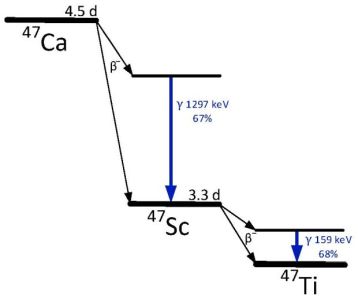Gregory W. Severin

Research
Radiochemistry
(Research Description PDF)
Radionuclides are important tools for tracing biological, chemical, and physical processes. The National Superconducting Cyclotron Laboratory (NSCL) and the upcoming Facility for Rare Isotope Beams (FRIB) have the potential to supply unique radioisotopes that are otherwise difficult to produce. The challenge of obtaining these rare isotopes from NSCL and FRIB is in the need for rigorous chemical or physical purification of sub-nanogram quantities of individual elements from a complex mixture of spallation and fragmentation products. The purpose of my research is to parse and purify the stock of co-produced radionuclides to obtain both high radionuclidic purity and high specific activity for application in basic science, medical, chemical and biological research. Of particular interest are transition and rare earth radiometals for use in the development of new diagnostics and therapeutics against invasive disease.
Radiometals in Medicine – Research into the molecular identity of cancerous and other malignant cells has identified biological vectors that can seek out disease sites in vivo. In order to trace the biodistributions and pharmacokinetics of these new vectors, preclinical Positron Emission Tomography (PET) has expanded beyond the organic and pseudo-organic radionuclides (11C, 13N, 14,15O, 18F) to include a host of longer-lived and unconventional radiometals (e.g. 44Sc, 45Ti, 52Mn, 64Cu, 89Zr, and 140Nd). Beyond receptor- and epitope-based PET, radiometals also facilitate development of metal-based drugs, allow tracing of the native and mimetic nature of metals in the body, can be used to track nanoparticle drug delivery vehicles, and in some cases have unique exploitable decay properties (e.g. 140Nd in Figure 1 below). Further, the diagnostic metals are often isotopically matched to therapeutic nuclides, motivating a rapid transition from diagnostic imaging to targeted radionuclide therapy.

A new water-cooled beamstop at NSCL will provide access to a selection of radiometals including 47Sc, a therapeutic analog to the positron emitter 44Sc. 47Sc forms following 47Ca decay (Figure 2), which is co-produced in high yield during 48Ca irradiations at NSCL. Isolation of 47Ca allows production of a 47Sc generator that extends the usable lifetime of 47Sc in addition to providing it in high purity and with high specific activity.
